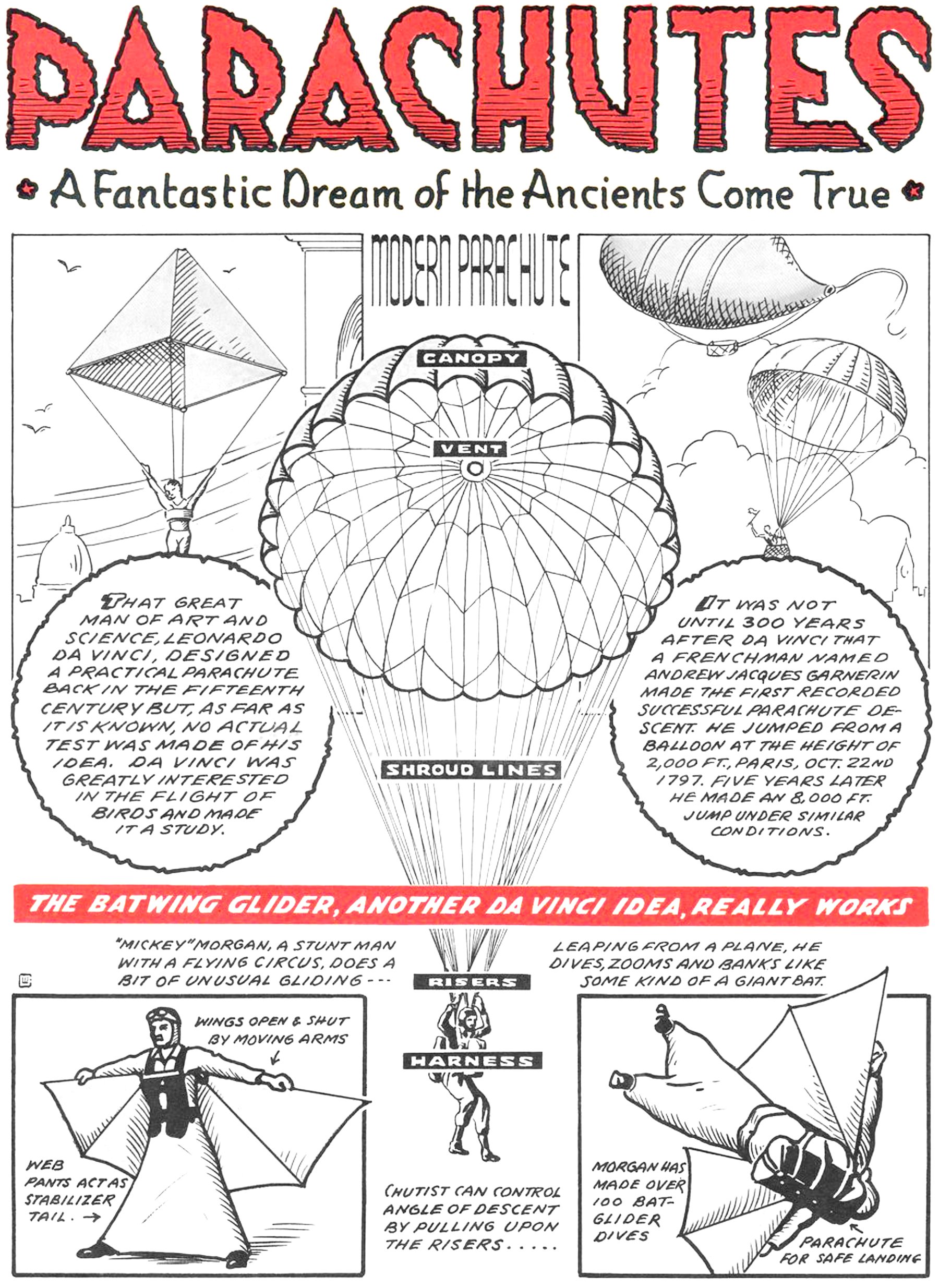Parachutes : A Fantastic Dream of the Ancients Come True
Pictured above is a page from a War Heroes comic book from 1943. It features a few examples of parachutes and a flying suit called the Batwing Glider. At the center of the page is a modern parachute, complete with its canopy, vent, shroud lines, risers and harness. Flanking this drawing are two historical examples of parachutes. The first is a sketch from Leonardo da Vinci’s notebooks circa 1495, and the second is the world’s first successful parachute descent by André-Jacques Garnerin in 1797. This triad presents a concise, albeit incomplete history of parachute design, but it does do a good job of visually connecting a modern parachute to its ancestors. For reference, here’s a more complete history of early parachute design.
At the bottom of the page is a wingsuit called the Batwing Glider. It’s a wearable suit with web pants and a pair of wings that nest in between the pilots arms and sides. The wings open up when the pilot raises his arms outwards. He also wears a parachute on his back for safe landings. The suit takes its inspiration from a Leonardo da Vinci idea, and apparently it really works. According to the illustrator, stunt man Mickey Morgan leaps from a plane, he dives, zooms and banks like some kind of giant bat. At the time he had completed over 100 dives with the suit. It seems to be a harbinger for modern wingsuits, which look quite similar except for the outstretched wings. Modern wingsuits look much more like a flying squirrel than a bird with wings.
This is a really interesting page, because it’s part advertisement, part history lesson, and part speculation. It shows the past, present and future of parachute technology, and it does it with the simplicity and brevity of comic book graphics.
Check out other posts about human flight and flying machines here.
Comic originally published in “Parachute: A Fantastic Dream of the Ancients Come True.” War Heroes 4. Dell Publishing, April-June 1943, 67.

